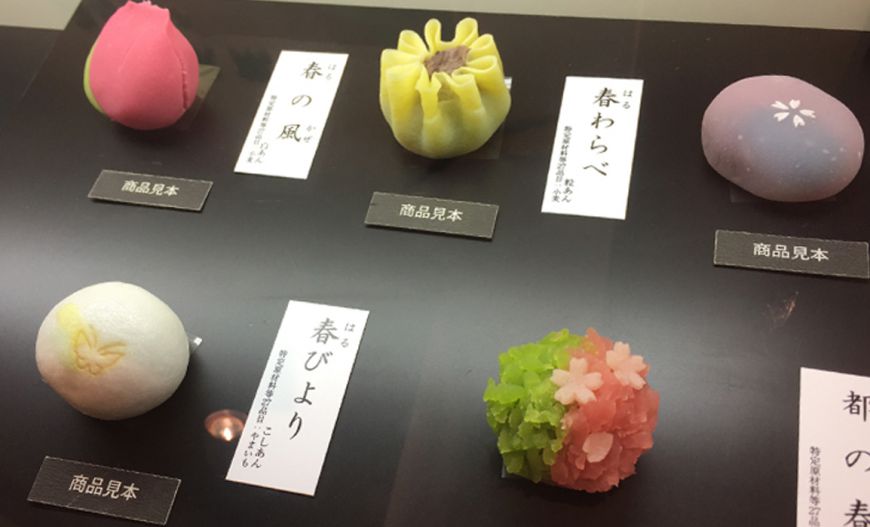A Glimpse Into the Tea Ceremony (Part 2)
- Holly Helt

Following my last post on the Japanese tea ceremony, let’s delve a little deeper to explore one of the two kinds of tea ceremonies.
What most foreigners experience is a short tea “session” or tea time (chakai). You might hear it called cha-no-yu. The matcha tea is usually made “thin” (usucha) and you get to drink the entire bowl...all three sips!
Then there is a much more formal affair (chaji) which is a full-blown four or five hour meal followed by the tea ceremony. But for now, let’s focus on the chakai.
Conversation during the ritual is minimal, very minimal, and it’s best to let your host initiate it. You would do well to memorize some phrases, as a gesture of respect. One of the most important phrases is to thank your host for making the tea: o-temae chodai itashimasu. The other biggie is to apologize to the person sitting next to you for drinking before they do. If you wait after receiving your bowl of tea, it’s a major insult to the host! The phrase is: o-sakini shitsurei shimasu (literally I’m being rude for going before you). That’s enough Japanese for now.
Representing an expression of respect, tranquillity, harmony and purity, this graceful dance is a time for the host and guests to enjoy a peaceful, quite time with a view to spiritual enlightenment regarded as “ichi-go-ichi-e” or “wa-kei-sei-jaku”.
When the host enters the tearoom, both the guests and host bow to each other in unison with flat palms on the tatami mat: index fingertips touching each other to form an inverted V. I will skip the actual steps in the making of the tea and gear this toward what you, as a guest, will be doing.
First an exquisite masterpiece of a sweet (wagashi) is presented to you, either on a plate or on a folded piece of special hand-made washi (paper). It might be on a tray that you have to pass to the guest next to you. Usually guests bring their own paper for sweets or are given some in advance. If you have tea ceremony paper, place it in front of you. Some guests will also have a folded fan and a utensil to eat the sweet.
It’s hard to explain what this “sweet” actually is, because we don’t have anything remotely like it in the West. Wagashi comes in so many varieties and all are works of art. One of the most common is a beautiful, rather chewy, “cake” made with bean or chestnut, vaguely similar to marzipan in texture but not in taste. These edible works of art represent the seasons, a poem, or even nature, and are made more for the mind than for a snack. But for now, just know that wagashi prepares the palate for the emerald, strong frothy sip which follows.
When you receive the sweet, don’t wolf it down! This delicacy is to be admired, contemplated and then eaten with a special wooden or metal utensil that looks vaguely like a knife or an olive fork (kashikiri). You will think it’s simply too beautiful to eat, but are encouraged to do so, “as nothing is permanent in this life” according to Zen philosophy. Eat all of it, probably in 4-5 bites, using the kashikiri.
After watching your graceful host perform one of the most impressive rituals done with precision accuracy, you will be offered tea in a breathtaking bowl, called a chawan, from which you will drink. When the bowl is set in front of you on the tatami mat, bow to your host with flat palms again. Then in deliberate fashion, however awkward it seems, take the bowl and put it on your left palm, holding with your right, and gently raise it just a little in a gesture of gratitude to your host. Now cup the bowl with both hands, fingers together.
The most beautiful side of the bowl always faces you - your host discreetly ensures this formality. So to echo this respect to your host, you must ceremoniously turn the chawan clockwise in three steps (180 degrees) so the most beautiful side now faces your host. Imagine doing a U-turn in your car with your hands at 9:00 and 3:00…and doing so without taking your hands off the wheel! Remember too that some of these bowls can cost as much as a Rembrandt! Both hands at all times please!
Your palate has been prepped with the wagashi and now it’s time to sip the matcha. Drink the three sips (or more) without putting the bowl down. Enjoy it but also drink it fairly quickly so others don’t wait for you. On the final sip, slurp it gently to give your host a heads up that you are done and thoroughly enjoyed it (even if you didn’t!).
After finishing the matcha, make sure to admire the bowl, still cupped in both hands and held close to the tatami mat: view all sides, even glance at the bottom, but remember which side is the “nice side”. Before placing the bowl on the mat, you must wipe the edge where you drank with a single swipe of your fingers to clean the rim of the chawan: thumb on the outside of the bowl, index finger on the inside. Discreetly clean your fingers by touching the wagashi paper. Now turn the bowl counter-clockwise twice so the “nice side” faces you and then place it on the tatami mat in front of you. The host or assistant will take it.
At all times focus on keeping your hands relaxed and beautiful with fingers together. When not engaged in the act of drinking, rest your hands on your thighs. You will be sitting on the floor, on your legs, and this will be torture by the end! They might take pity on you and provide a “chair” the size of two stacked bricks.
If you go to Japan, I encourage you to experience a tea ceremony by checking with your hotel or local tourist office. I also know many places in the Kyoto, Nara and Kobe areas so please email me (holly@chikitea.com) if you are interested.
Stay tuned next month for the expanded version of the tea ceremony. You won’t want to miss it!

About Holly Helt
Holly is American and grew up in Japan drinking Japanese tea from age-three. She has studied two methods of tea ceremony, Urasenke and the lesser-known Yabunouchi, which has a direct lineage to Sen-no Rikyu (known as the father of the tea ceremony) ; it's also the school of practice for samurai. In 2012 she founded Chiki Tea - an online retailer of Japanese green teas, all sourced directly from small farms in Japan. Splitting her time between Japan and her home in Texas, Holly strives to bring the best teas from Japan to as many people as she can find to share in her life's passion.
